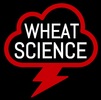MiningMining has a number of negative effects on then environment. Groundwater pollution, deforestation, decreased air quality due to dust erosion, and the release of toxic chemicals are some of the worst consequences. Watch the video to see a detailed description of the effects of mining.
|
DeforestationDeforestation is the removal of forests. This leads to less oxygen being produced, more runoff, more erosion of topsoil, and decreased habitat for animals and other species. Watch the video below to learn more about deforestation.
|
Agriculture & OvergrazingAgricultural uses of land may look appealing from a distance but up close, the application of pesticides, herbicides, and antibiotics may make agricultural land use less friendly to the environment. Additionally, plowing and irrigation frequently lead to increased erosion. Overgrazing animals can strip the vegetation from an area which can also cause increased erosion.
|
Urbanization & Land UseUrbanization is the growth of urban areas which include buildings, roads, and other unnatural structures. Urbanization usually increases runoff into streams and rivers because many city surfaces like roofs, pavement, and sidewalks do not allow water to soak in. This can cause increased flooding in nearby streams, rivers, and lakes. Additionally, urbanization usually decreases habitats for animals. Please watch the video to learn more.
|
Quizlets
Mining quizlet.com/203415853/mining-flash-cards/
Deforestation quizlet.com/190048782/deforestation-flash-cards/
Agriculture quizlet.com/200139968/land-use-flash-cards/
Urbanization quizlet.com/123759577/urbanization-flash-cards/
Deforestation quizlet.com/190048782/deforestation-flash-cards/
Agriculture quizlet.com/200139968/land-use-flash-cards/
Urbanization quizlet.com/123759577/urbanization-flash-cards/

